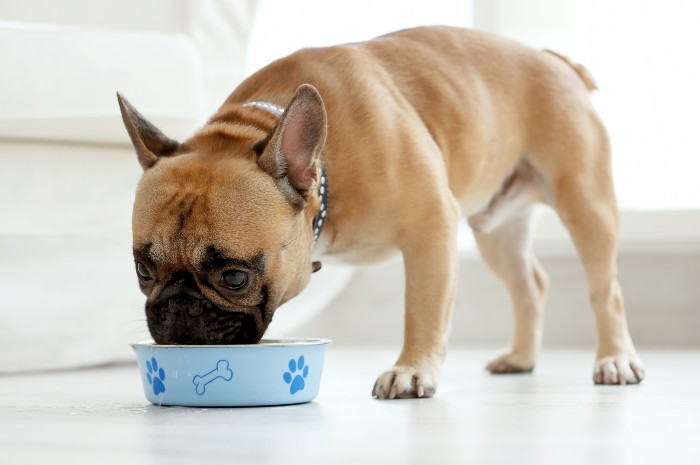
DogFoodAdvisor is reader supported See how
Dog Food Advisor is 100% impartial and is never paid to promote any brand. But if you buy using links on this page, we may earn a referral fee.
The phrase ‘grain-free’ has become one of the most confusing and debated in the world of dog food in recent years. It was and is often seen as a positive — many nutritionists warn against high levels of grains in dog food.
However, in recent years, a growing concern has emerged regarding the potential connection between canine dilated cardiomyopathy (DCM) and dogs’ diets — with ‘grain-free’ foods framed by some as the problem.
As a result, pet parents, believing they are offering their furry companions the best nutrition, find themselves troubled by the notion that their diet could be linked to such a serious disease.
While DCM has various causes, including genetics, medications, and infections, it’s crucial to note there’s no scientific evidence definitively linking grain-free or grain-inclusive diets to DCM.
This, however, has not eased the concern or confusion among many pet parents. Not least because people confuse food advertised as ‘grain-free’ — which often has grain substitutes — with food that simply has no grains in it, such as raw dog food.
To address the uncertainties around foods labelled ‘grain-free’, we spoke to Dr. Richard Patton, a seasoned Ph.D. animal nutritionist with over 40 years of experience and expertise in formulating canine diets, more than 25 scientific publications to his name, and who has authored a book on pet nutrition. He’s a nutritional consultant for the raw food community.
(Please note that these are Dr. Patton’s expert opinions, not those of Dog Food Advisor.)
What Is Grain-Free Dog Food?
In the popular language of the pet food industry, “grain-free” trade signifies the absence of ingredients like corn, oats, wheat, soybeans, and the like. This labeling suggests the replacement of these perceived “problematic” grains with supposedly more benign options such as potatoes, sweet potatoes, or other “non-grain” alternatives.
However, the crux of the issue isn’t the specific grain’s name but rather the quantity of soluble carbohydrates it contains — essentially, starch and sugar. Potatoes, often deemed virtuous replacements for grains, can be just as carbohydrate-rich and, therefore, pose similar concerns as grains like corn. Similarly, a diet featuring lower levels of soluble carbohydrates can still be highly nutritious, even if it includes moderate amounts of grains.
How Do I Know If My Dog Should Be Grain-Free?
Your dog should generally be fed a diet that is low in starch and sugar. Their diet should be low in soluble carbohydrates — it’s usually easiest to feed your dog complete and balanced meat-based dog food.
Apart from honey, there are very few natural sources of food that are high in carbohydrates. If we were to survive in the wild, we would find many things to eat, but very few carbohydrates. Mankind made them easy to find, but a high-carb diet is ill-suited for our genetic machinery.
Should Pet Parents Avoid Grain-Free Food?
The thing to avoid is a high-carb diet. The pet food industry is dominated by brands that make crunchy kibble on a machine called an extruder. To properly run an extruder requires a fair measure of starch due to its inherent qualities. It expands when heated with water; it stays expanded when cooled and dried.
The pet food industry is a behemoth, with a dog or cat for every other person in the country. Big kibble has coerced the market into thinking kibble is the way to go. In fact, a pet parent’s buying decision is guided by three things: cost, convenience, and correct nutrition. It’s hard to have all three. Big kibble trades on its strength in cost and convenience.
Are There Different Types Of Grain-Free Dog Food?
There are different ingredients one can replace corn, oats, wheat, etc. with. However, if it’s a crunchy kibble, it will contain excess carbohydrates.
Is Grain-Free Good For Dogs?
Given that both “with grain” and “grain-free” can be equally dubious due to high starch content, the benefits are confined to economics and convenience.
Is Grain-Free Bad For Dogs?
A grain-free kibble will be high in starch and deliver excess carbohydrates, the same as regular grain kibble. Everyone thinks fat causes obesity. This is incorrect. Excess carbohydrates cause obesity.
Does Grain-Free Dog Food Cause Heart Disease (DCM, Enlarged Heart, Or Dilated Cardiomyopathy)?
There is no credible scientific evidence for this, let alone proof. If there is a link between diet and DCM in dogs, it is far more likely to be a matter of protein quality, amount, and specific amino acid amount.
Do Vets Recommend Grain-Free Dog Food?
Grain can be fed to dogs if fed in moderation. A primordial diet is 5-7% carbohydrate, and this is the dietary level mammals are genetically evolved to consume, and thrive on best. Ultimately, a dog needs a balanced diet and one that suits their unique needs.
Is Grain-Free Food The Same As Gluten-Free/Wheat-Free Dog Food?
If grain-free means the diet is free of wheat, rye, barley, and oats, then the diet can be considered gluten-free. There are pet food kibbles in the market that snub these specific cereal grains.
If you or your pet has a gluten intolerance, you readily grasp the relevance of this issue. Gluten intolerance is a genetic inability to digest the gliadin fraction of the wheat protein gluten. Gluten is also found in the protein of rye and to a smaller extent in barley and oats. So no, grain-free does not speak to gluten-free specifically, but often a grain-free diet can be gluten-free as well.
Can Puppies Eat Grain-Free Food?
Talking about grain-free dry kibble, yes, of course, they can eat it, and given that puppies chew on anything, they will appear to relish it. The excess carbohydrates in some foods are just as bad for puppies as adults. Puppy food should derive its calories from protein and fat, not from carbohydrates.
What Is The Best Grain-Free Dog Food?
The question should be what is the best type of food? Regarding grain-free kibble, one can assume the various competing products all comply with AAFCO’s recommended guidelines for nutrient content.
In this regard, it is not easy to identify one superior brand among dry kibbles. However, pending AAFCO changes will call for labels to state not just total calories but what percentage of these total calories derives from protein, fat and carbs. This will greatly inform pet parents’ buying decisions and advance awareness that low-carb diets are best.
For example, a grain-free dry kibble with 30% carbohydrate calories is better than one that is 40 or 50%. Under current label rules, this way of evaluating and ranking is not possible. When it does become the norm, it will show that natural and natural raw diets at 5-10% calories from carbohydrates are the best.
Is Grain-Free Food Better For Allergies?
If a pet is indeed allergic to one of the grains shunned in grain-free formulas (viz., corn, oats, wheat, soy, barley, rice) a grain-free kibble could lessen symptoms. There was an all-meat-type pet food producer who guaranteed his meat-based product would clear any skin problem or your money back. In 30 years he never refunded a cent. Often, a dog’s food sensitivity is not to a specific ingredient but to a diet’s overall carbohydrate analysis. Lowering starch and sugar in a diet often lessens allergic symptoms.
Final word
The Dog Food Advisor does not accept money, gifts, samples or other incentives in exchange for special consideration in preparing our reviews.
However, we do receive a referral fee from online retailers (like Chewy or Amazon) and from sellers of perishable pet food when readers click over to their websites from ours. This helps cover the cost of operation of our free blog. Thanks for your support.
For more information, please visit our Disclaimer and Disclosure page.
Article reviewed by
Laura Ward
Pet Nutritionist
Laura studied BSc (Hons) Animal Science with an accreditation in Nutrition at the University of Nottingham, before working for eight years in the pet food and nutrition industry.




